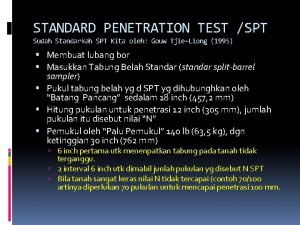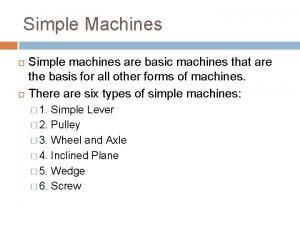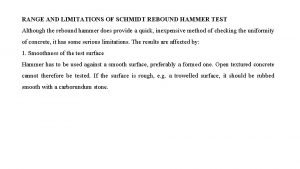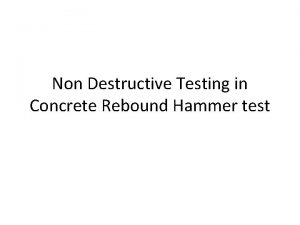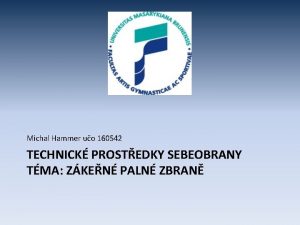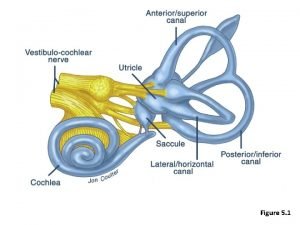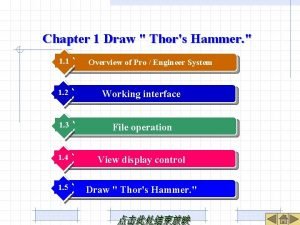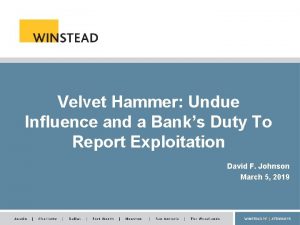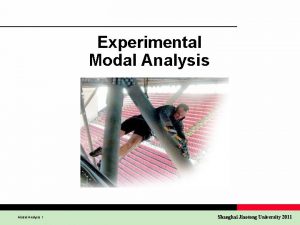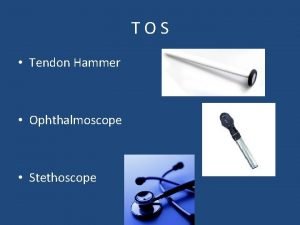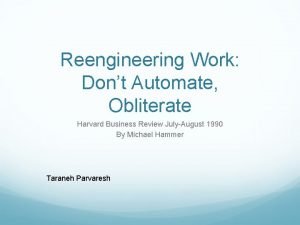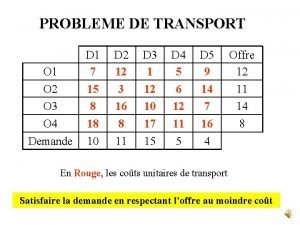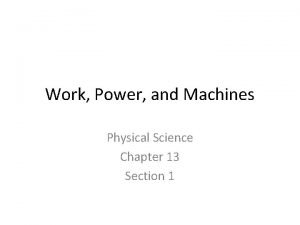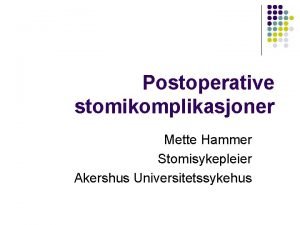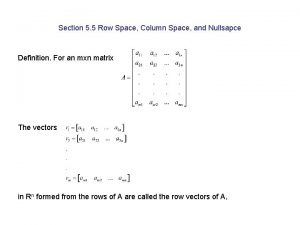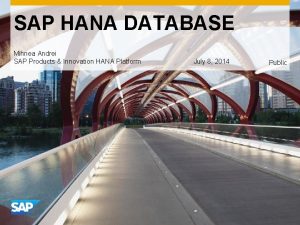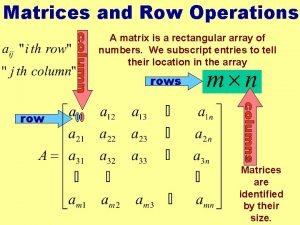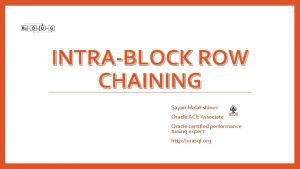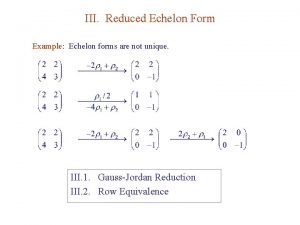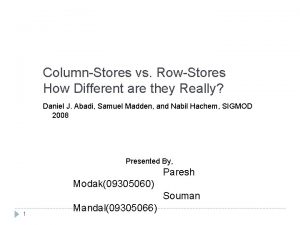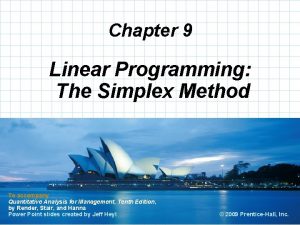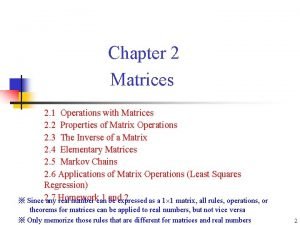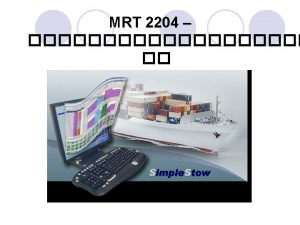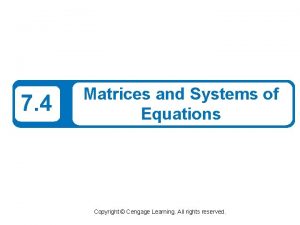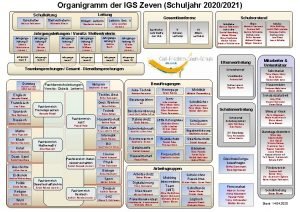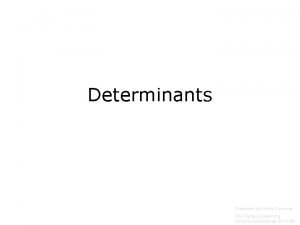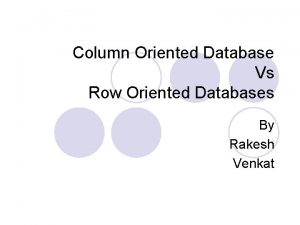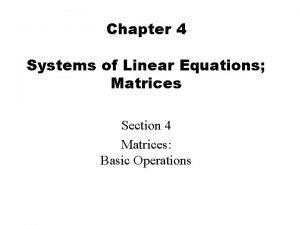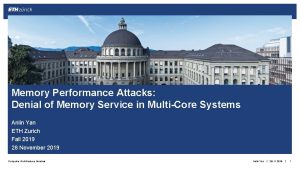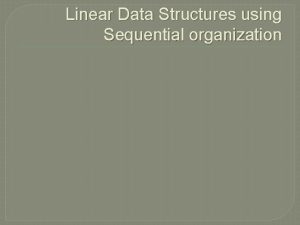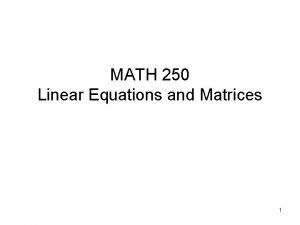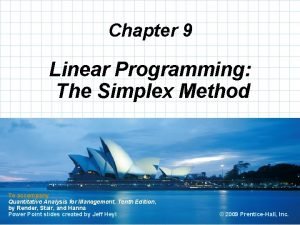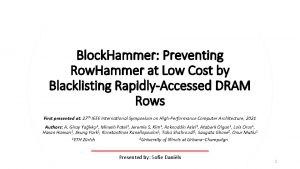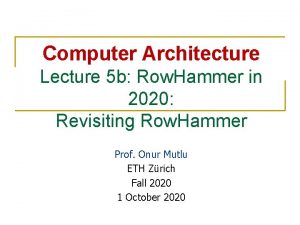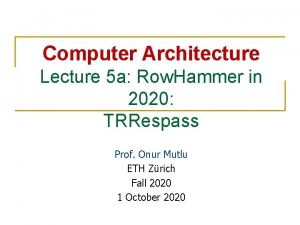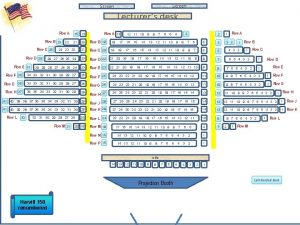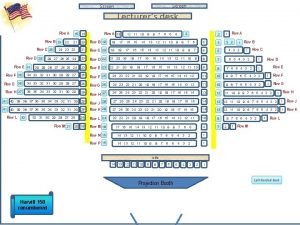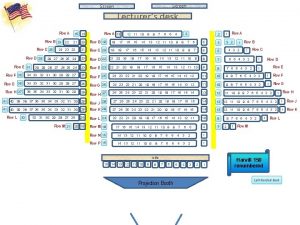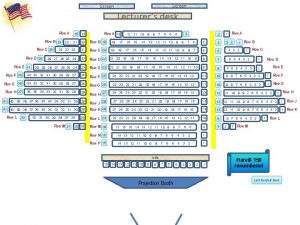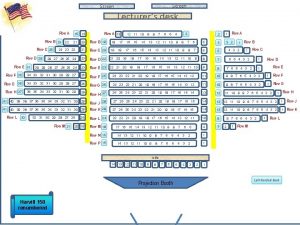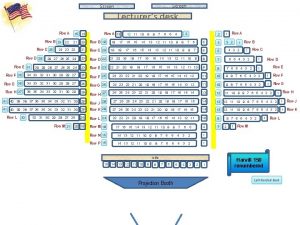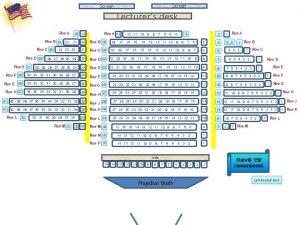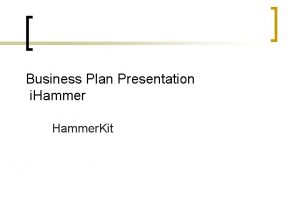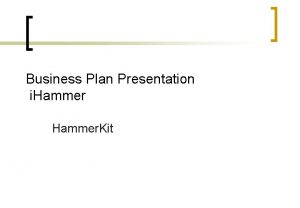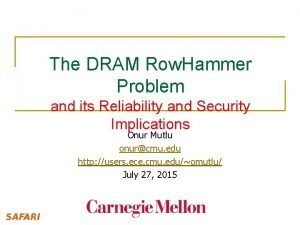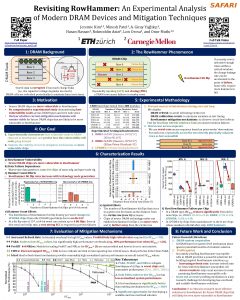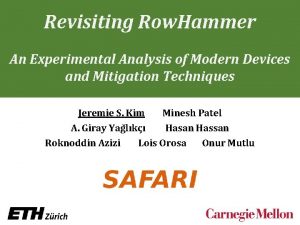Computer Architecture Lecture 6 a Row Hammer II





















![Analysis of Data Retention Failures [ISCA’ 13] n Jamie Liu, Ben Jaiyen, Yoongu Kim, Analysis of Data Retention Failures [ISCA’ 13] n Jamie Liu, Ben Jaiyen, Yoongu Kim,](https://slidetodoc.com/presentation_image_h/e6fc760b0432737beee822c019148f98/image-22.jpg)



















![NAND Flash Vulnerabilities [HPCA’ 17] HPCA, Feb. 2017 https: //people. inf. ethz. ch/omutlu/pub/flash-memory-programming-vulnerabilities_hpca 17. NAND Flash Vulnerabilities [HPCA’ 17] HPCA, Feb. 2017 https: //people. inf. ethz. ch/omutlu/pub/flash-memory-programming-vulnerabilities_hpca 17.](https://slidetodoc.com/presentation_image_h/e6fc760b0432737beee822c019148f98/image-42.jpg)
![3 D NAND Flash Reliability I [HPCA’ 18] n Yixin Luo, Saugata Ghose, Yu 3 D NAND Flash Reliability I [HPCA’ 18] n Yixin Luo, Saugata Ghose, Yu](https://slidetodoc.com/presentation_image_h/e6fc760b0432737beee822c019148f98/image-43.jpg)
![3 D NAND Flash Reliability II [SIGMETRICS’ 18] n Yixin Luo, Saugata Ghose, Yu 3 D NAND Flash Reliability II [SIGMETRICS’ 18] n Yixin Luo, Saugata Ghose, Yu](https://slidetodoc.com/presentation_image_h/e6fc760b0432737beee822c019148f98/image-44.jpg)



















![Mitigation of Retention Issues [SIGMETRICS’ 14] n Samira Khan, Donghyuk Lee, Yoongu Kim, Alaa Mitigation of Retention Issues [SIGMETRICS’ 14] n Samira Khan, Donghyuk Lee, Yoongu Kim, Alaa](https://slidetodoc.com/presentation_image_h/e6fc760b0432737beee822c019148f98/image-64.jpg)


![Handling Variable Retention Time [DSN’ 15] n Moinuddin Qureshi, Dae Hyun Kim, Samira Khan, Handling Variable Retention Time [DSN’ 15] n Moinuddin Qureshi, Dae Hyun Kim, Samira Khan,](https://slidetodoc.com/presentation_image_h/e6fc760b0432737beee822c019148f98/image-67.jpg)




![Handling Data-Dependent Failures Samira Khan, Donghyuk Lee, and Onur Mutlu, [DSN’ 16] n "PARBOR: Handling Data-Dependent Failures Samira Khan, Donghyuk Lee, and Onur Mutlu, [DSN’ 16] n "PARBOR:](https://slidetodoc.com/presentation_image_h/e6fc760b0432737beee822c019148f98/image-72.jpg)

![Handling Both DPD and VRT [ISCA’ 17] n Minesh Patel, Jeremie S. Kim, and Handling Both DPD and VRT [ISCA’ 17] n Minesh Patel, Jeremie S. Kim, and](https://slidetodoc.com/presentation_image_h/e6fc760b0432737beee822c019148f98/image-74.jpg)


































![NAND Flash Vulnerabilities [HPCA’ 17] HPCA, Feb. 2017 https: //people. inf. ethz. ch/omutlu/pub/flash-memory-programming-vulnerabilities_hpca 17. NAND Flash Vulnerabilities [HPCA’ 17] HPCA, Feb. 2017 https: //people. inf. ethz. ch/omutlu/pub/flash-memory-programming-vulnerabilities_hpca 17.](https://slidetodoc.com/presentation_image_h/e6fc760b0432737beee822c019148f98/image-109.jpg)
![3 D NAND Flash Reliability I [HPCA’ 18] n Yixin Luo, Saugata Ghose, Yu 3 D NAND Flash Reliability I [HPCA’ 18] n Yixin Luo, Saugata Ghose, Yu](https://slidetodoc.com/presentation_image_h/e6fc760b0432737beee822c019148f98/image-110.jpg)
![3 D NAND Flash Reliability II [SIGMETRICS’ 18] n Yixin Luo, Saugata Ghose, Yu 3 D NAND Flash Reliability II [SIGMETRICS’ 18] n Yixin Luo, Saugata Ghose, Yu](https://slidetodoc.com/presentation_image_h/e6fc760b0432737beee822c019148f98/image-111.jpg)







- Slides: 118

Computer Architecture Lecture 6 a: Row. Hammer II Prof. Onur Mutlu ETH Zürich Fall 2019 4 October 2019

Recall: The Story of Row. Hammer n One can predictably induce bit flips in commodity DRAM chips q n >80% of the tested DRAM chips are vulnerable First example of how a simple hardware failure mechanism can create a widespread system security vulnerability 2

Row. Hammer Solutions

Two Types of Row. Hammer Solutions n Immediate q q n Longer-term q q n To protect the vulnerable DRAM chips in the field Limited possibilities To protect future DRAM chips Wider range of protection mechanisms Our ISCA 2014 paper proposes both types of solutions q q Seven solutions in total PARA proposed as best solution already employed in the field 4

Apple’s Patch for Row. Hammer n https: //support. apple. com/en-gb/HT 204934 HP, Lenovo, and other vendors released similar patches

Probabilistic Activation in Real Life (I) https: //twitter. com/isislovecruft/status/1021939922754723841 6

Probabilistic Activation in Real Life (II) https: //twitter. com/isislovecruft/status/1021939922754723841 7

Seven Row. Hammer Solutions Yoongu Kim, Ross Daly, Jeremie Kim, Chris Fallin, Ji Hye Lee, Donghyuk Proposed n Lee, Chris Wilkerson, Konrad Lai, and Onur Mutlu, "Flipping Bits in Memory Without Accessing Them: An Experimental Study of DRAM Disturbance Errors" Proceedings of the 41 st International Symposium on Computer Architecture (ISCA), Minneapolis, MN, June 2014. [Slides (pptx) (pdf)] [Lightning Session Slides (pptx) (pdf)] [Source Code and Data] 8

A Takeaway Main Memory Needs Intelligent Controllers for Security 9

Industry Is Writing Papers About It, Too 10

Call for Intelligent Memory Controllers 11

Aside: Intelligent Controller for NAND Flash USB Daughter Board USB Jack HAPS-52 Mother Board Virtex-V FPGA (NAND Controller) Virtex-II Pro (USB controller) 1 x-nm NAND Flash [DATE 2012, ICCD 2012, DATE 2013, ITJ 2013, ICCD 2013, SIGMETRICS 2014, NAND Daughter Board HPCA 2015, DSN 2015, MSST 2015, JSAC 2016, HPCA 2017, DFRWS 2017, PIEEE 2017, HPCA 2018, SIGMETRICS 2018] Cai+, “Error Characterization, Mitigation, and Recovery in Flash Memory Based Solid State Drives, ” Proc. IEEE 2017.

Aside: Intelligent Controller for NAND Flash Proceedings of the IEEE, Sept. 2017 https: //arxiv. org/pdf/1706. 08642 13

A Key Takeaway Main Memory Needs Intelligent Controllers 14

Future Memory Reliability/Security Challenges

Future of Main Memory n DRAM is becoming less reliable more vulnerable 16

Large-Scale Failure Analysis of DRAM Chips n Analysis and modeling of memory errors found in all of Facebook’s server fleet n Justin Meza, Qiang Wu, Sanjeev Kumar, and Onur Mutlu, "Revisiting Memory Errors in Large-Scale Production Data Centers: Analysis and Modeling of New Trends from the Field" Proceedings of the 45 th Annual IEEE/IFIP International Conference on Dependable Systems and Networks (DSN), Rio de Janeiro, Brazil, June 2015. [Slides (pptx) (pdf)] [DRAM Error Model] 17

DRAM Reliability Reducing Intuition : quadrat increas ic e in capacity Meza+, “Revisiting Memory Errors in Large-Scale Production Data Centers, ” DSN’ 15.

Aside: SSD Error Analysis in the Field First large-scale field study of flash memory errors n n Justin Meza, Qiang Wu, Sanjeev Kumar, and Onur Mutlu, "A Large-Scale Study of Flash Memory Errors in the Field" Proceedings of the ACM International Conference on Measurement and Modeling of Computer Systems (SIGMETRICS), Portland, OR, June 2015. [Slides (pptx) (pdf)] [Coverage at ZDNet] 19

Future of Main Memory n n n DRAM is becoming less reliable more vulnerable Due to difficulties in DRAM scaling, other problems may also appear (or they may be going unnoticed) Some errors may already be slipping into the field q q n Read disturb errors (Rowhammer) Retention errors Read errors, write errors … These errors can also pose security vulnerabilities 20

DRAM Data Retention Time Failures n n Determining the data retention time of a cell/row is getting more difficult Retention failures may already be slipping into the field 21
![Analysis of Data Retention Failures ISCA 13 n Jamie Liu Ben Jaiyen Yoongu Kim Analysis of Data Retention Failures [ISCA’ 13] n Jamie Liu, Ben Jaiyen, Yoongu Kim,](https://slidetodoc.com/presentation_image_h/e6fc760b0432737beee822c019148f98/image-22.jpg)
Analysis of Data Retention Failures [ISCA’ 13] n Jamie Liu, Ben Jaiyen, Yoongu Kim, Chris Wilkerson, and Onur Mutlu, "An Experimental Study of Data Retention Behavior in Modern DRAM Devices: Implications for Retention Time Profiling Mechanisms" Proceedings of the 40 th International Symposium on Computer Architecture (ISCA), Tel-Aviv, Israel, June 2013. Slides (ppt) Slides (pdf) 22

Two Challenges to Retention Time Profiling n Data Pattern Dependence (DPD) of retention time n Variable Retention Time (VRT) phenomenon 23

Two Challenges to Retention Time Profiling n Challenge 1: Data Pattern Dependence (DPD) q q Retention time of a DRAM cell depends on its value and the values of cells nearby it When a row is activated, all bitlines are perturbed simultaneously 24

Data Pattern Dependence n n Electrical noise on the bitline affects reliable sensing of a DRAM cell The magnitude of this noise is affected by values of nearby cells via q Bitline-bitline coupling electrical coupling between adjacent bitlines q Bitline-wordline coupling electrical coupling between each bitline and the activated wordline 25

Data Pattern Dependence n n n Electrical noise on the bitline affects reliable sensing of a DRAM cell The magnitude of this noise is affected by values of nearby cells via q Bitline-bitline coupling electrical coupling between adjacent bitlines q Bitline-wordline coupling electrical coupling between each bitline and the activated wordline Retention time of a cell depends on data patterns stored in nearby cells need to find the worst data pattern to find worst-case retention time this pattern is location dependent 26

Two Challenges to Retention Time Profiling n Challenge 2: Variable Retention Time (VRT) q Retention time of a DRAM cell changes randomly over time n a cell alternates between multiple retention time states q Leakage current of a cell changes sporadically due to a charge trap in the gate oxide of the DRAM cell access transistor When the trap becomes occupied, charge leaks more readily from the transistor’s drain, leading to a short retention time n Called Trap-Assisted Gate-Induced Drain Leakage This process appears to be a random process [Kim+ IEEE TED’ 11] q Worst-case retention time depends on a random process q q need to find the worst case despite this 27

Modern DRAM Retention Time Distribution NEWER OLDER Newer device families have more weak cells than older ones Likely a result of technology scaling 28

An Example VRT Cell A cell from E 2 Gb chip family 29

Variable Retention Time Many failing cells jump from very high retention time to very low Most failing cells exhibit VRT Min ret time = Max ret time Expected if no VRT A 2 Gb chip family 30

Industry Is Writing Papers About It, Too 31

Industry Is Writing Papers About It, Too 32

Keeping Future Memory Secure

How Do We Keep Memory Secure? n DRAM n Flash memory n Emerging Technologies q q Phase Change Memory STT-MRAM RRAM, memristors … 34

Challenge and Opportunity for Future Fundamentally Secure, Reliable, Safe Computing Architectures 35

Solution Direction: Principled Designs Design fundamentally secure computing architectures Predict and prevent such safety issues 36

Architecting for Security n Understand: Methods for vulnerability modeling & discovery q q q n Architect: Principled architectures with security as key concern q q q n Modeling and prediction based on real (device) data and analysis Understanding vulnerabilities Developing reliable metrics Good partitioning of duties across the stack Cannot give up performance and efficiency Patch-ability in the field Design & Test: Principled design, automation, (online) testing q q Design for security High coverage and good interaction with system reliability methods 37

Understand Model with Experiments (DRAM) Temperature Controller FPGAs Heater FPGAs PC Kim+, “Flipping Bits in Memory Without Accessing Them: An Experimental Study of DRAM Disturbance Errors, ” ISCA 2014. 38

Understand Model with Experiments (Flash) USB Daughter Board USB Jack HAPS-52 Mother Board Virtex-V FPGA (NAND Controller) Virtex-II Pro (USB controller) 1 x-nm NAND Flash [DATE 2012, ICCD 2012, DATE 2013, ITJ 2013, ICCD 2013, SIGMETRICS 2014, NAND Daughter Board HPCA 2015, DSN 2015, MSST 2015, JSAC 2016, HPCA 2017, DFRWS 2017, PIEEE 2017, HPCA 2018, SIGMETRICS 2018] Cai+, “Error Characterization, Mitigation, and Recovery in Flash Memory Based Solid State Drives, ” Proc. IEEE 2017.

Understanding Flash Memory Reliability Proceedings of the IEEE, Sept. 2017 https: //arxiv. org/pdf/1706. 08642 40

Understanding Flash Memory Reliability Justin Meza, Qiang Wu, Sanjeev Kumar, and Onur Mutlu, n "A Large-Scale Study of Flash Memory Errors in the Field" Proceedings of the ACM International Conference on Measurement and Modeling of Computer Systems (SIGMETRICS), Portland, OR, June 2015. [Slides (pptx) (pdf)] [Coverage at ZDNet] [Coverage on The Register] [Coverage on Tech. Spot] [Coverage on The Tech Report] 41
![NAND Flash Vulnerabilities HPCA 17 HPCA Feb 2017 https people inf ethz chomutlupubflashmemoryprogrammingvulnerabilitieshpca 17 NAND Flash Vulnerabilities [HPCA’ 17] HPCA, Feb. 2017 https: //people. inf. ethz. ch/omutlu/pub/flash-memory-programming-vulnerabilities_hpca 17.](https://slidetodoc.com/presentation_image_h/e6fc760b0432737beee822c019148f98/image-42.jpg)
NAND Flash Vulnerabilities [HPCA’ 17] HPCA, Feb. 2017 https: //people. inf. ethz. ch/omutlu/pub/flash-memory-programming-vulnerabilities_hpca 17. pdf 42
![3 D NAND Flash Reliability I HPCA 18 n Yixin Luo Saugata Ghose Yu 3 D NAND Flash Reliability I [HPCA’ 18] n Yixin Luo, Saugata Ghose, Yu](https://slidetodoc.com/presentation_image_h/e6fc760b0432737beee822c019148f98/image-43.jpg)
3 D NAND Flash Reliability I [HPCA’ 18] n Yixin Luo, Saugata Ghose, Yu Cai, Erich F. Haratsch, and Onur Mutlu, "Heat. Watch: Improving 3 D NAND Flash Memory Device Reliability by Exploiting Self-Recovery and Temperature. Awareness" Proceedings of the 24 th International Symposium on High-Performance Computer Architecture (HPCA), Vienna, Austria, February 2018. [Lightning Talk Video] [Slides (pptx) (pdf)] [Lightning Session Slides (pptx) (pdf)] 43
![3 D NAND Flash Reliability II SIGMETRICS 18 n Yixin Luo Saugata Ghose Yu 3 D NAND Flash Reliability II [SIGMETRICS’ 18] n Yixin Luo, Saugata Ghose, Yu](https://slidetodoc.com/presentation_image_h/e6fc760b0432737beee822c019148f98/image-44.jpg)
3 D NAND Flash Reliability II [SIGMETRICS’ 18] n Yixin Luo, Saugata Ghose, Yu Cai, Erich F. Haratsch, and Onur Mutlu, "Improving 3 D NAND Flash Memory Lifetime by Tolerating Early Retention Loss and Process Variation" Proceedings of the ACM International Conference on Measurement and Modeling of Computer Systems (SIGMETRICS), Irvine, CA, USA, June 2018. [Abstract] [POMACS Journal Version (same content, different format)] [Slides (pptx) (pdf)] 44

Recall: Collapse of the “Galloping Gertie” Source: AP http: //www. wsdot. wa. gov/tnbhistory/connections 3. htm 45

Another Example (1994) Source: By 최광모 - Own work, CC BY-SA 4. 0, https: //commons. wikimedia. org/w/index. php? curid=35197984 46

Yet Another Example (2007) Source: Morry Gash/AP, https: //www. npr. org/2017/08/01/540669701/10 -years-after-bridge-collapse-america-is-still-crumbling? t=1535427165809 47

A More Recent Example (2018) Source: AFP / Valery HACHE, https: //www. capitalfm. co. ke/news/2018/08/genoa-bridge-collapse-what-we-know/ 48

The Takeaway, Again In-Field Patch-ability (Intelligent Memory) Can Avoid Such Failures 49

Final Thoughts on Row. Hammer

Some Thoughts on Row. Hammer n n A simple hardware failure mechanism can create a widespread system security vulnerability How to exploit and fix the vulnerability requires a strong understanding across the transformation layers q n Fixing needs to happen for two types of chips q q n And, a strong understanding of tools available to you Existing chips (already in the field) Future chips Mechanisms for fixing are different between the two types 51

Aside: Byzantine Failures n This class of failures is known as Byzantine failures n Characterized by q q Undetected erroneous computation Opposite of “fail fast (with an error or no result)” n “erroneous” can be “malicious” (intent is the only distinction) Very difficult to detect and confine Byzantine failures Do all you can to avoid them n Lamport et al. , “The Byzantine Generals Problem, ” ACM TOPLAS 1982. n n Slide credit: Mahadev Satyanarayanan, CMU, 15 -440, Spring 2015 52

Aside: Byzantine Generals Problem https: //dl. acm. org/citation. cfm? id=357176 53

Row. Hammer, Revisited n One can predictably induce bit flips in commodity DRAM chips q n >80% of the tested DRAM chips are vulnerable First example of how a simple hardware failure mechanism can create a widespread system security vulnerability 54

Row. Hammer: Retrospective n New mindset that has enabled a renewed interest in HW security attack research: q q n Many new Row. Hammer attacks… q q n Real (memory) chips are vulnerable, in a simple and widespread manner this causes real security problems Hardware reliability security connection is now mainstream discourse Tens of papers in top security venues More to come as Row. Hammer is getting worse (DDR 4 & beyond) Many new Row. Hammer solutions… q q Apple security release; Memtest 86 updated Many solution proposals in top venues (latest in ISCA 2019) Principled system-DRAM co-design (in original Row. Hammer paper) More to come… 55

Perhaps Most Importantly… n Row. Hammer enabled a shift of mindset in mainstream security researchers q q n This mindset has enabled many systems security researchers to examine hardware in more depth q n General-purpose hardware is fallible, in a widespread manner Its problems are exploitable And understand HW’s inner workings and vulnerabilities It is no coincidence that two of the groups that discovered Meltdown and Spectre heavily worked on Row. Hammer attacks before q More to come… 56

Summary: Row. Hammer n n DRAM reliability is reducing Reliability issues open up security vulnerabilities q n Very hard to defend against Rowhammer is a prime example q q First example of how a simple hardware failure mechanism can create a widespread system security vulnerability Its implications on system security research are tremendous & exciting n Bad news: Row. Hammer is getting worse. n Good news: We have a lot more to do. q q q We are now fully aware hardware is easily fallible. We are developing both attacks and solutions. We are developing principled models, methodologies, solutions. 57

For More on Row. Hammer… n Onur Mutlu and Jeremie Kim, "Row. Hammer: A Retrospective" IEEE Transactions on Computer-Aided Design of Integrated Circuits and Systems (TCAD) Special Issue on Top Picks in Hardware and Embedded Security, 2019. [Preliminary ar. Xiv version] 58


Computer Architecture Lecture 6 a: Row. Hammer II Prof. Onur Mutlu ETH Zürich Fall 2019 4 October 2019

We Did Not Cover The Later Slides. They Are For Your Benefit. 61

Future Memory Reliability/Security Challenges

Finding DRAM Retention Failures n n How can we reliably find the retention time of all DRAM cells? Goals: so that we can Make DRAM reliable and secure q Make techniques like RAIDR work improve performance and energy q 63
![Mitigation of Retention Issues SIGMETRICS 14 n Samira Khan Donghyuk Lee Yoongu Kim Alaa Mitigation of Retention Issues [SIGMETRICS’ 14] n Samira Khan, Donghyuk Lee, Yoongu Kim, Alaa](https://slidetodoc.com/presentation_image_h/e6fc760b0432737beee822c019148f98/image-64.jpg)
Mitigation of Retention Issues [SIGMETRICS’ 14] n Samira Khan, Donghyuk Lee, Yoongu Kim, Alaa Alameldeen, Chris Wilkerson, and Onur Mutlu, "The Efficacy of Error Mitigation Techniques for DRAM Retention Failures: A Comparative Experimental Study" Proceedings of the ACM International Conference on Measurement and Modeling of Computer Systems (SIGMETRICS), Austin, TX, June 2014. [Slides (pptx) (pdf)] [Poster (pptx) (pdf)] [Full data sets] 64

Towards an Online Profiling System Key Observations: • Testing alone cannot detect all possible failures • Combination of ECC and other mitigation techniques is much more effective – But degrades performance • Testing can help to reduce the ECC strength – Even when starting with a higher strength ECC Khan+, “The Efficacy of Error Mitigation Techniques for DRAM Retention Failures: A Comparative Experimental Study, ” SIGMETRICS 2014.

Towards an Online Profiling System Initially Protect DRAM with Strong ECC 1 Test Periodically Test Parts of DRAM 2 ECC Mitigate errors and reduce ECC 3 Run tests periodically after a short interval at smaller regions of memory
![Handling Variable Retention Time DSN 15 n Moinuddin Qureshi Dae Hyun Kim Samira Khan Handling Variable Retention Time [DSN’ 15] n Moinuddin Qureshi, Dae Hyun Kim, Samira Khan,](https://slidetodoc.com/presentation_image_h/e6fc760b0432737beee822c019148f98/image-67.jpg)
Handling Variable Retention Time [DSN’ 15] n Moinuddin Qureshi, Dae Hyun Kim, Samira Khan, Prashant Nair, and Onur Mutlu, "AVATAR: A Variable-Retention-Time (VRT) Aware Refresh for DRAM Systems" Proceedings of the 45 th Annual IEEE/IFIP International Conference on Dependable Systems and Networks (DSN), Rio de Janeiro, Brazil, June 2015. [Slides (pptx) (pdf)] 67

AVATAR Insight: Avoid retention failures Upgrade row on ECC error Observation: Rate of VRT >> Rate of soft error (50 x-2500 x) Scrub (15 min) DRAM Rows Ref. Rate Table ECC A ECC B ECC C 0 1 ECC D 0 ECC E ECC F ECC G ECC H Weak Cell RETENTION PROFILING 0 0 0 Row protected from future retention failures 1 1 0 AVATAR mitigates VRT by increasing refresh rate on error 68

RESULTS: REFRESH SAVINGS No a VRT Retention Testing Once Year can revert refresh saving from AVATAR 60% to 70% AVATAR reduces refresh by 60%-70%, similar to multi rate refresh but with VRT tolerance 69

SPEEDUP 1. 60 Speedup 1. 50 AVATAR (1 yr) No. Refresh 1. 40 1. 30 1. 20 1. 10 1. 00 8 Gb 16 Gb 32 Gb 64 Gb AVATAR gets 2/3 rd the performance of No. Refresh. More gains at higher capacity nodes 70

Energy Delay Product ENERGY DELAY PRODUCT 1. 0 0. 9 0. 8 0. 7 0. 6 0. 5 0. 4 0. 3 0. 2 0. 1 0. 0 AVATAR (1 yr) 8 Gb 16 Gb 32 Gb No. Refresh 64 Gb AVATAR reduces EDP, Significant reduction at higher capacity nodes 71
![Handling DataDependent Failures Samira Khan Donghyuk Lee and Onur Mutlu DSN 16 n PARBOR Handling Data-Dependent Failures Samira Khan, Donghyuk Lee, and Onur Mutlu, [DSN’ 16] n "PARBOR:](https://slidetodoc.com/presentation_image_h/e6fc760b0432737beee822c019148f98/image-72.jpg)
Handling Data-Dependent Failures Samira Khan, Donghyuk Lee, and Onur Mutlu, [DSN’ 16] n "PARBOR: An Efficient System-Level Technique to Detect Data. Dependent Failures in DRAM" Proceedings of the 45 th Annual IEEE/IFIP International Conference on Dependable Systems and Networks (DSN), Toulouse, France, June 2016. [Slides (pptx) (pdf)] 72

Handling Data-Dependent Failures n Samira Khan, Chris Wilkerson, Zhe Wang, Alaa R. Alameldeen, Donghyuk Lee, [MICRO’ 17] and Onur Mutlu, "Detecting and Mitigating Data-Dependent DRAM Failures by Exploiting Current Memory Content" Proceedings of the 50 th International Symposium on Microarchitecture (MICRO), Boston, MA, USA, October 2017. [Slides (pptx) (pdf)] [Lightning Session Slides (pptx) (pdf)] [Poster (pptx) (pdf)] 73
![Handling Both DPD and VRT ISCA 17 n Minesh Patel Jeremie S Kim and Handling Both DPD and VRT [ISCA’ 17] n Minesh Patel, Jeremie S. Kim, and](https://slidetodoc.com/presentation_image_h/e6fc760b0432737beee822c019148f98/image-74.jpg)
Handling Both DPD and VRT [ISCA’ 17] n Minesh Patel, Jeremie S. Kim, and Onur Mutlu, "The Reach Profiler (REAPER): Enabling the Mitigation of DRAM Retention Failures via Profiling at Aggressive Conditions" Proceedings of the 44 th International Symposium on Computer Architecture (ISCA), Toronto, Canada, June 2017. [Slides (pptx) (pdf)] [Lightning Session Slides (pptx) (pdf)] n n n First experimental analysis of (mobile) LPDDR 4 chips Analyzes the complex tradeoff space of retention time profiling Idea: enable fast and robust profiling at higher refresh intervals & temperatures 74

Row Decoder Goal: find all retention failures for a refresh interval T > default (64 ms) SA SA SA 75/8

Process, voltage, temperature Variable retention time Data pattern dependence 76/8

Characterization of 368 LPDDR 4 DRAM Chips 1 Cells are more likely to fail at an increased (refresh interval | temperature) 2 Complex tradeoff space between profiling (speed & coverage & false positives) 77/8

temperature operate here refresh interval 78/8

temperature H G C N A I E L I R F O PR profile here operate here refresh interval 79/8

Reach Profiling A new DRAM retention failure profiling methodology + Faster and more reliable than current approaches + Enables longer refresh intervals 80/8

LPDDR 4 Studies 1. Temperature 2. Data Pattern Dependence 3. Retention Time Distributions 4. Variable Retention Time 5. Individual Cell Characterization 20/36

# New Failing Cells Long-term Continuous Profiling Representative chip from Vendor B, 2048 ms, 45°C Time (days) • New failing cells continue to appear over time - Attributed to variable retention time (VRT) • The set of failing cells changes over time 21/36

# New Failing Cells Long-term Continuous Profiling Representative chip from Vendor B, 2048 ms, 45°C Error correction codes (ECC) and online profiling are necessary to manage new failing cells Time (days) • New failing cells continue to appear over time - Attributed to variable retention time (VRT) • The set of failing cells changes over time 21/36

Single-cell Failure Probability (Cartoon) idealized cell (retention time = 3 s) 22/36

Single-cell Failure Probability (Cartoon) idealized cell (retention time = 3 s) actual cell N(μ, σ) | μ = 3 s 22/36

Single-cell Failure Probability (Real) 22/36

Single-cell Failure Probability (Real) failed 9 times out of 16 trials 22/36

Single-cell Failure Probability (Real) 22/36

Single-cell Failure Probability (Real) 22/36

Single-cell Failure Probability (Real) operate here 22/36

Single-cell Failure Probability (Real) operate here 22/36

Single-cell Failure Probability (Real) operate here hard to find 22/36

Single-cell Failure Probability (Real) operate here profile here hard to find 22/36

Single-cell Failure Probability (Real) operate here profile here easy to find hard to find 22/36

Single-cell Failure Probability (Real) operate here profile here easy to find hard to find false positives 22/36

Single-cell Failure Probability (Real) operate here profile here easy fail to find Any cell is more likely to at a longer refresh interval OR a higher temperature hard to find false positives 22/36

Reach Profiling Key idea: profile at a longer refresh interval and/or a higher temperature • Pros - Fast + Reliable: reach profiling searches for cells where they are most likely to fail • Cons - False Positives: profiler may identify cells that fail under profiling conditions, but not under operating conditions 25/36

Towards an Implementation Reach profiling is a general methodology 3 key questions for an implementation: What are desirable profiling conditions? How often should the system profile? What information does the profiler need? 26/36

Three Key Profiling Metrics 1. Runtime: how long profiling takes 2. Coverage: portion of all possible failures discovered by profiling 3. False positives: number of cells observed to fail during profiling but never during actual operation 27/36

Three Key Profiling Metrics 1. Runtime: how long profiling takes 2. Coverage: portion of all possible failures discovered by profiling We explore how these three 3. False positives: number ofmetrics cells observed to failmany duringdifferent profiling but change under neverprofiling during actual operation conditions 27/36

Simulated End-to-end Performance On average, REAPER enables: 16. 3% system performance improvement 36. 4% DRAM power reduction REAPER enables longer refresh intervals, which are unreasonable refresh interval (ms) using brute-force profiling Reprofile rarely Reprofile often 34/36

REAPER Summary Problem: • DRAM refresh performance and energy overhead is high • Current approaches to retention failure profiling are slow or unreliable Goals: 1. Thoroughly analyze profiling tradeoffs 2. Develop a fast and reliable profiling mechanism Key Contributions: 1. First detailed characterization of 368 LPDDR 4 DRAM chips 2. Reach profiling: Profile at a longer refresh interval or higher temperature than target conditions, where cells are more likely to fail Evaluation: • 2. 5 x faster profiling with 99% coverage and 50% false positives • REAPER enables 16. 3% system performance improvement and 36. 4% DRAM power reduction • Enables longer refresh intervals that were previously unreasonable 36/36

The Takeaway, Reinforced Main Memory Needs Intelligent Controllers for Reliability & Security 103

Understanding In-DRAM ECC n Minesh Patel, Jeremie S. Kim, Hasan Hassan, and Onur Mutlu, "Understanding and Modeling On-Die Error Correction in Modern DRAM: An Experimental Study Using Real Devices" Proceedings of the 49 th Annual IEEE/IFIP International Conference on Dependable Systems and Networks (DSN), Portland, OR, USA, June 2019. [Source Code for EINSim, the Error Inference Simulator] Best paper session. 104

Understanding Flash Memory Vulnerabilities

Understand Model with Experiments (Flash) USB Daughter Board USB Jack HAPS-52 Mother Board Virtex-V FPGA (NAND Controller) Virtex-II Pro (USB controller) 1 x-nm NAND Flash [DATE 2012, ICCD 2012, DATE 2013, ITJ 2013, ICCD 2013, SIGMETRICS 2014, NAND Daughter Board HPCA 2015, DSN 2015, MSST 2015, JSAC 2016, HPCA 2017, DFRWS 2017, PIEEE 2017, HPCA 2018, SIGMETRICS 2018] Cai+, “Error Characterization, Mitigation, and Recovery in Flash Memory Based Solid State Drives, ” Proc. IEEE 2017.

Understanding Flash Memory Reliability Proceedings of the IEEE, Sept. 2017 https: //arxiv. org/pdf/1706. 08642 107

Understanding Flash Memory Reliability Justin Meza, Qiang Wu, Sanjeev Kumar, and Onur Mutlu, n "A Large-Scale Study of Flash Memory Errors in the Field" Proceedings of the ACM International Conference on Measurement and Modeling of Computer Systems (SIGMETRICS), Portland, OR, June 2015. [Slides (pptx) (pdf)] [Coverage at ZDNet] [Coverage on The Register] [Coverage on Tech. Spot] [Coverage on The Tech Report] 108
![NAND Flash Vulnerabilities HPCA 17 HPCA Feb 2017 https people inf ethz chomutlupubflashmemoryprogrammingvulnerabilitieshpca 17 NAND Flash Vulnerabilities [HPCA’ 17] HPCA, Feb. 2017 https: //people. inf. ethz. ch/omutlu/pub/flash-memory-programming-vulnerabilities_hpca 17.](https://slidetodoc.com/presentation_image_h/e6fc760b0432737beee822c019148f98/image-109.jpg)
NAND Flash Vulnerabilities [HPCA’ 17] HPCA, Feb. 2017 https: //people. inf. ethz. ch/omutlu/pub/flash-memory-programming-vulnerabilities_hpca 17. pdf 109
![3 D NAND Flash Reliability I HPCA 18 n Yixin Luo Saugata Ghose Yu 3 D NAND Flash Reliability I [HPCA’ 18] n Yixin Luo, Saugata Ghose, Yu](https://slidetodoc.com/presentation_image_h/e6fc760b0432737beee822c019148f98/image-110.jpg)
3 D NAND Flash Reliability I [HPCA’ 18] n Yixin Luo, Saugata Ghose, Yu Cai, Erich F. Haratsch, and Onur Mutlu, "Heat. Watch: Improving 3 D NAND Flash Memory Device Reliability by Exploiting Self-Recovery and Temperature. Awareness" Proceedings of the 24 th International Symposium on High-Performance Computer Architecture (HPCA), Vienna, Austria, February 2018. [Lightning Talk Video] [Slides (pptx) (pdf)] [Lightning Session Slides (pptx) (pdf)] 110
![3 D NAND Flash Reliability II SIGMETRICS 18 n Yixin Luo Saugata Ghose Yu 3 D NAND Flash Reliability II [SIGMETRICS’ 18] n Yixin Luo, Saugata Ghose, Yu](https://slidetodoc.com/presentation_image_h/e6fc760b0432737beee822c019148f98/image-111.jpg)
3 D NAND Flash Reliability II [SIGMETRICS’ 18] n Yixin Luo, Saugata Ghose, Yu Cai, Erich F. Haratsch, and Onur Mutlu, "Improving 3 D NAND Flash Memory Lifetime by Tolerating Early Retention Loss and Process Variation" Proceedings of the ACM International Conference on Measurement and Modeling of Computer Systems (SIGMETRICS), Irvine, CA, USA, June 2018. [Abstract] [POMACS Journal Version (same content, different format)] [Slides (pptx) (pdf)] 111

Another Talk: NAND Flash Memory Robustness Yu Cai, Saugata Ghose, Erich F. Haratsch, Yixin Luo, and Onur Mutlu, n "Error Characterization, Mitigation, and Recovery in Flash Memory Based Solid State Drives" to appear in Proceedings of the IEEE, 2017. Cai+, “Error Patterns in MLC NAND Flash Memory: Measurement, Characterization, and Analysis, ” DATE 2012. Cai+, “Flash Correct-and-Refresh: Retention-Aware Error Management for Increased Flash Memory Lifetime, ” ICCD 2012. Cai+, “Threshold Voltage Distribution in MLC NAND Flash Memory: Characterization, Analysis and Modeling, ” DATE 2013. Cai+, “Error Analysis and Retention-Aware Error Management for NAND Flash Memory, ” Intel Technology Journal 2013. Cai+, “Program Interference in MLC NAND Flash Memory: Characterization, Modeling, and Mitigation, ” ICCD 2013. Cai+, “Neighbor-Cell Assisted Error Correction for MLC NAND Flash Memories, ” SIGMETRICS 2014. Cai+, ”Data Retention in MLC NAND Flash Memory: Characterization, Optimization and Recovery, ” HPCA 2015. Cai+, “Read Disturb Errors in MLC NAND Flash Memory: Characterization and Mitigation, ” DSN 2015. Luo+, “WARM: Improving NAND Flash Memory Lifetime with Write-hotness Aware Retention Management, ” MSST 2015. Meza+, “A Large-Scale Study of Flash Memory Errors in the Field, ” SIGMETRICS 2015. Luo+, “Enabling Accurate and Practical Online Flash Channel Modeling for Modern MLC NAND Flash Memory, ” IEEE JSAC 2016. Cai+, “Vulnerabilities in MLC NAND Flash Memory Programming: Experimental Analysis, Exploits, and Mitigation Techniques, ” HPCA 2017. Fukami+, “Improving the Reliability of Chip-Off Forensic Analysis of NAND Flash Memory Devices, ” DFRWS EU 2017. Luo+, “Heat. Watch: Improving 3 D NAND Flash Memory Device Reliability by Exploiting Self-Recovery and Temperature. Awareness, " HPCA 2018. Luo+, “Improving 3 D NAND Flash Memory Lifetime by Tolerating Early Retention Loss and Process Variation, " SIGMETRICS 2018. Cai+, “Error Characterization, Mitigation, and Recovery in Flash Memory Based Solid State Drives, ” Proc. IEEE 2017.

Two Other Solution Directions

There are Two Other Solution n. Directions New Technologies: Replace or (more likely) augment DRAM with a different technology q Non-volatile memories Embracing Un-reliability: Design memories with different reliability and store data intelligently across them [Luo+ DSN 2014] n Problem Algorithm Program/Language System Software SW/HW Interface Micro-architecture Logic Devices Electrons n … Fundamental solutions to security require co-design across the hierarchy 114

Memory error vulnerability Exploiting Memory Error Tolerance with Hybrid Memory Systems Vulnerable data Tolerant data Reliable memory Low-cost memory Onprotected Microsoft’s Web • Search Vulnerable • ECC No. ECCworkload or Tolerant Parity data Reduces server hardware cost by 4. 7 % data • Well-tested chips • Less-tested chips Achieves single server availability target of 99. 90 % App/Data A App/Data B App/Data C Heterogeneous-Reliability Memory [DSN 2014] 115

Heterogeneous-Reliability Memory App 1 data A App 1 data B App 2 data A App 2 data B App 3 data A App 3 data B Step 1: Characterize and classify application memory error tolerance App 1 data A Vulnerable App 1 data B App 3 data A App 3 data B App 2 data A App 2 data B Tolerant Step 2: Map application data to the HRM system enabled by SW/HW cooperative solutions Reliable memory Parity memory + software recovery (Par+R) Unreliable Low-cost memory 116

Evaluation Results Typical Server Consumer PC HRM Less-Tested (L) HRM/L Inner is worse Outer is better Bigger area means better tradeoff 117

More on Heterogeneous-Reliability Yixin Luo, Sriram Govindan, Bikash Sharma, Mark Santaniello, Justin Meza, Aman Memory Kansal, Jie Liu, Badriddine Khessib, Kushagra Vaid, and Onur Mutlu, n "Characterizing Application Memory Error Vulnerability to Optimize Data Center Cost via Heterogeneous-Reliability Memory" Proceedings of the 44 th Annual IEEE/IFIP International Conference on Dependable Systems and Networks (DSN), Atlanta, GA, June 2014. [Summary] [Slides (pptx) (pdf)] [Coverage on ZDNet] 118
 Is row, row your boat a binary form
Is row, row your boat a binary form Row hammer error
Row hammer error Sql
Sql Row row poem
Row row poem Architecture lecture notes
Architecture lecture notes Isa vs microarchitecture
Isa vs microarchitecture 01:640:244 lecture notes - lecture 15: plat, idah, farad
01:640:244 lecture notes - lecture 15: plat, idah, farad Bus design in computer architecture
Bus design in computer architecture Difference between computer architecture and organisation
Difference between computer architecture and organisation Design of basic computer with flowchart
Design of basic computer with flowchart Computer security 161 cryptocurrency lecture
Computer security 161 cryptocurrency lecture Computer aided drug design lecture notes
Computer aided drug design lecture notes What is hammer headline
What is hammer headline Dustin kensrue rejoice
Dustin kensrue rejoice Water hammer calculation
Water hammer calculation Peter l. hammer
Peter l. hammer Teknik pembentukan material
Teknik pembentukan material Koreksi nilai n spt
Koreksi nilai n spt Spt hammer calibration
Spt hammer calibration Lever family simple machines
Lever family simple machines Disadvantages of rebound hammer test
Disadvantages of rebound hammer test Ndt rebound hammer test
Ndt rebound hammer test Michal hammer
Michal hammer Hammer straße 30-34 hamburg
Hammer straße 30-34 hamburg Plant
Plant Andreas parker
Andreas parker Raceways and fittings
Raceways and fittings What are the drill symbols and its meaning
What are the drill symbols and its meaning A carpentry hammer with a slightly rounded
A carpentry hammer with a slightly rounded Gastrocnemius soleus
Gastrocnemius soleus Flush right headline in newspaper
Flush right headline in newspaper Mark hammer and associates
Mark hammer and associates Anti-water hammer tanks
Anti-water hammer tanks Introduction of hand tools
Introduction of hand tools Helix
Helix Thor's hammer drawing
Thor's hammer drawing Coal candy with hammer
Coal candy with hammer Velvet hammer definition
Velvet hammer definition Hammer felder
Hammer felder Frisbee forehand throw
Frisbee forehand throw P = f/a
P = f/a Hammer paragraph structure
Hammer paragraph structure Mdof
Mdof Hammer tos
Hammer tos Michael hammer 1990 harvard business review
Michael hammer 1990 harvard business review What do you call the path of a projectile
What do you call the path of a projectile Hammer v. dagenhart
Hammer v. dagenhart Hammer longballo
Hammer longballo Golongan min yuen
Golongan min yuen Uncle hammer quotes
Uncle hammer quotes Cutter mill is fitted with__________ knives.
Cutter mill is fitted with__________ knives. Methode balas hammer
Methode balas hammer Dr richard hammer
Dr richard hammer Newton's third law hammer and nail
Newton's third law hammer and nail Terje hammer
Terje hammer Hammer mill principle
Hammer mill principle Loki son of giants
Loki son of giants Screwdriver safety rules
Screwdriver safety rules Flintlocks blast hammer
Flintlocks blast hammer Hammer curl regression
Hammer curl regression Hammer
Hammer I'd rather be a spider than a snail
I'd rather be a spider than a snail A crane uses an average force of 5200 n
A crane uses an average force of 5200 n Stomiproblem
Stomiproblem Mc hammer net worth
Mc hammer net worth Thor's hammer metallum
Thor's hammer metallum Architecture business cycle activities
Architecture business cycle activities Return architecture
Return architecture Integral architecture example
Integral architecture example Integral architecture example
Integral architecture example What is a conditional relative frequency
What is a conditional relative frequency Serialism in music
Serialism in music Row space of a matrix
Row space of a matrix Scott phillips software developer
Scott phillips software developer Row store vs column store
Row store vs column store Echelon form definition
Echelon form definition What are the rows in the periodic table called
What are the rows in the periodic table called Coefficient matrix
Coefficient matrix Multivariable linear systems and row operations answer key
Multivariable linear systems and row operations answer key Elementary row operation
Elementary row operation Row chaining
Row chaining Row equivalent
Row equivalent Augemented matrix
Augemented matrix Period row
Period row Michael davies embassy row
Michael davies embassy row Row store vs column store
Row store vs column store The zj row in a simplex table for maximization represents
The zj row in a simplex table for maximization represents Chapter 22 heat transfer
Chapter 22 heat transfer Multiplicative inverse of matrix
Multiplicative inverse of matrix Stowage plan for bulk cargo
Stowage plan for bulk cargo Row house in sumiyoshi plan
Row house in sumiyoshi plan Short approach lighting system
Short approach lighting system Pascals triangle binomial
Pascals triangle binomial Row equivalent matrix
Row equivalent matrix Row space of a matrix
Row space of a matrix Rethrog
Rethrog Iserv igs row
Iserv igs row Pupil assessment
Pupil assessment Home row key
Home row key How to do row reduction
How to do row reduction Row oriented vs column oriented database
Row oriented vs column oriented database Single row matrix
Single row matrix 4-row freestall barn layouts
4-row freestall barn layouts Four in a row calculator
Four in a row calculator Memory performance attacks
Memory performance attacks Cj-zj
Cj-zj Given the base address of an array b 1300
Given the base address of an array b 1300 Power bi row level security userprincipalname
Power bi row level security userprincipalname Back row attack
Back row attack Class desk arrangement
Class desk arrangement Row major
Row major 3rd row
3rd row Group technology layout
Group technology layout Random sample generator excel
Random sample generator excel Row level encryption
Row level encryption Chapter 9 linear programming
Chapter 9 linear programming Vertical row
Vertical row First row transition metals
First row transition metals The row
The row

















